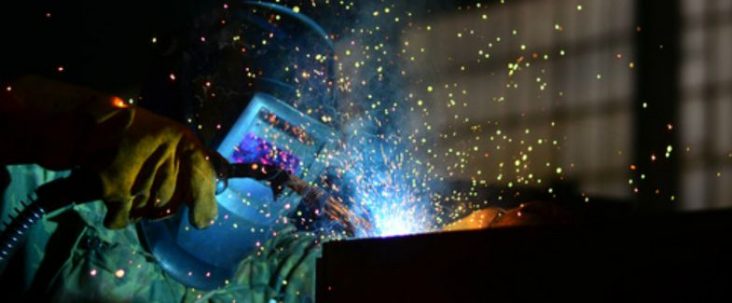GDP data shows U.S., regional growth continues at robust pace, but labor challenges still ahead
by May 4, 2019 8:16 pm 510 views

The U.S. and regional economies continued to expand briskly in first quarter 2019, but a highly-watched Midwest economic indicator shows that possible labor shortages in the nation’s tightening job pool could douse or slow economic growth in the weeks and months ahead.
On Friday (April 26) the U.S. Bureau of Economic Analysis (BEA) released its “advance” estimate showing real U.S. gross domestic product (GDP) spiked at an annual rate of 3.2% in the first quarter, up a full percentage point from the lukewarm growth of 2.2% in the fourth quarter of 2018.
The BEA’s first-quarter advance estimate is based on source data that are incomplete or subject to further revision by the U.S. Department of Commerce economic research group. The “second” estimate for the first quarter, based on more complete data, will be released on May 30, 2019. The final reading will follow in late June.
Still, last week’s GDP report led Secretary of Commerce Wilbur Ross to boast that President Donald Trump’s policies have “unleashed” the U.S. economy, easily beating Wall Street predictions of only a 2.3% expansion in the first three months of 2019. Ross said the advance report shows the administration is fulfilling the President’s promise for 3% annual growth, along with a continued robust job market that added 300,000 new positions in January.
“The Trump economy has repeatedly defied the skeptics who predicted an economic downturn and has restored America’s position in the world as a consistent source of economic growth,” said Ross of the first of three GDP readings that measures the value of goods and services produced by the nation’s economy less the value of the goods and services used in production.
Meanwhile, a regional economic indicator based on the same GDP data shows that while the current expansion has continued across the nine-state region stretching from Minnesota to Arkansas for 29 straight months, there are some challenges ahead in a tight job market.
Creighton University’s Mid-America Business Conditions Index reported that the regional indicator fell to 55.9 in April from a 58.2 reading in the previous month. The nine-state economic snapshot from Creighton Economic Forecasting Group, which mirrors the national Purchasing Managers Institute (PMI) monthly survey, ranges between 0 and 100 with neutral growth at 50.
“The regional economy continues to expand at a positive pace. However, as in recent months, finding and hiring qualified workers remained the chief threat to the manufacturing economy for the region. Approximately 44.7% of employers identified labor shortages as the greatest threat to company success in the next 12 months,” said Ernie Goss, director of Creighton University’s Economic Forecasting Group In Omaha, Neb.
Concerning Arkansas, the April Business Conditions Index for Arkansas declined to 57.7 from March’s 61.6. Components of the index from the monthly survey of supply managers were new orders at 64.5, production or sales at 61.1, delivery lead time at 55.4, inventories at 55.5, and employment at 51.9.
“Over the last 12 months, the Arkansas economy has added jobs at a 2.5% pace, a regional high, while durable and nondurable goods manufacturers have expanded jobs at a rate of 4.6% and 2.2%, respectively,” said Goss.
Besides Arkansas, the monthly survey also captures economic activity in Iowa, Kansas, Minnesota, Missouri, Nebraska, North Dakota, Oklahoma and South Dakota.
